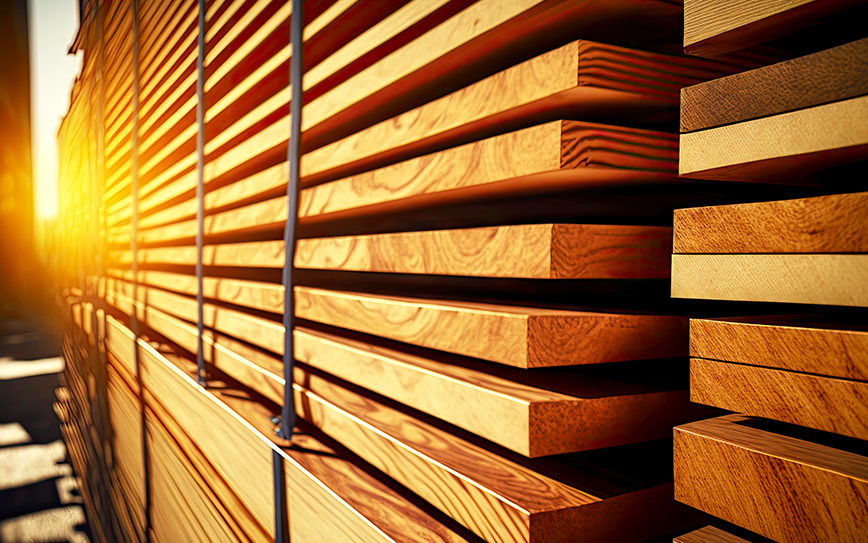In the ever-evolving world of construction, where innovation and sustainability are at the forefront, timber is experiencing a renaissance as a versatile and eco-friendly building material. As we step into 2024, the timber trends shaping the construction industry are not only pushing the boundaries of design but also promoting a greener and more sustainable future.
Mass Timber Construction Takes Center Stage:
Mass timber construction methods, including Cross-Laminated Timber (CLT) and Glue-Laminated Timber (Glulam), are gaining immense popularity in 2024. These engineered wood products allow for the creation of large, stable structures, offering an alternative to traditional concrete and steel. Mass timber's strength, durability, and aesthetic appeal make it a top choice for architects and builders looking to combine sustainability with innovative design.
Sustainable Sourcing and Forest Certification:
As environmental consciousness continues to grow, the construction industry is placing a stronger emphasis on sustainable sourcing of timber. In 2024, builders are increasingly opting for timber products from responsibly managed forests. Forest certification programs, such as the Forest Stewardship Council (FSC) and the Programme for the Endorsement of Forest Certification (PEFC), are gaining prominence, ensuring that timber used in construction meets strict environmental and social standards.
Prefabrication and Modular Construction:
Timber's versatility extends beyond traditional construction methods. Prefabrication and modular construction are on the rise, with timber components being manufactured off-site and then assembled on location. This not only reduces construction time but also minimizes waste and environmental impact. The ease with which timber can be prefabricated makes it an ideal choice for projects demanding efficiency without compromising quality.
Biophilic Design Incorporating Timber Elements:
Biophilic design, which seeks to connect people with nature in the built environment, is gaining traction in 2024. Timber, with its natural warmth and texture, plays a pivotal role in incorporating biophilic elements into structures. From exposed timber beams to large windows framing scenic views, architects are harnessing the beauty of timber to create spaces that promote well-being and environmental harmony.
Hybrid Construction Combining Timber with Other Materials:
Hybrid construction, which combines timber with other materials like concrete and steel, is becoming a prevalent trend in 2024. This approach allows builders to leverage the strengths of each material, optimizing structural integrity while enjoying the benefits of timber's sustainability. The combination of materials adds a layer of flexibility and creativity to architectural design.
Fire-Resistant Timber Treatments:
Addressing concerns about the fire resistance of timber, advancements in treatments and coatings are making timber a safer option. Fire-resistant treatments are gaining prominence, enhancing the ability of timber to withstand fire while maintaining its structural integrity. This innovation expands the application of timber in construction, assuaging concerns about safety and making it a viable choice for a broader range of projects.
Smart Timber Technologies:
The integration of smart technologies into construction materials is not limited to concrete and steel. In 2024, we see the emergence of smart timber technologies, including sensors and monitoring systems, which enhance the performance and longevity of timber structures. These technologies provide real-time data on factors such as moisture levels, temperature, and structural integrity, allowing for proactive maintenance and ensuring the longevity of timber-built structures.
The timber trends of 2024 signal a paradigm shift in the construction industry. Architects and builders are increasingly turning to timber not just for its aesthetic appeal but also for its sustainability, versatility, and compatibility with modern construction methods. As we navigate the challenges of the 21st century, timber stands as a symbol of a greener, more eco-conscious approach to building the world of tomorrow. Organizations such as PY Timber Warehouse are at the forefront of this evolution of the timber industry. With their vast experience in the industry and a comprehensive selection of wood supplies, they are leading the sustainability movement.












